Timur: Brutal Military Leader And His Desire To Conquer But Not To Rule
A. Sutherland - AncientPages.com - Historical records confirm that the greatest military campaigns of conquest were often accomplished by the robust nomadic and semi-nomadic peoples inhabiting Central Asia.
Their horsemen were perfectly trained and could defeat the armies of any settled civilization. These Asian fighters went to battle with no fear because they were inspired by their most skilled leaders such as the Mongol Genghis Khan or the Tatar Timur, also known as Timur the Lame or Tamerlane.
Today’s article is devoted to Timur, who became one of the most successful military leaders in history.
Timur Rose To Power Despite A Serious Physical Disability
Timur was a conqueror born into a tribe of horsemen in the area of Central Asia that is today Uzbekistan and Tajikistan. As a young man, Timur led a band of lawless fighters who robbed traveling merchants and engaged themselves in problems with local tribes.
Left: Timur -Turco-Mongol Conqueror. Source ; Right: A Timurid-era illustration of Timur.
One day, he suffered an arrow wound that left his right arm and leg partially paralyzed. He was able to ride a horse but he could only walk short distances, otherwise needing to be carried.
His crippling injuries did not stop Timur from rising up and being one of the most feared leaders of the 14th and early 15th centuries.
Sophisticated, Intelligent And Very Cruel Ruler
Timur spoke Persian, Mongolian, and Turkish. He was a learned ruler, who respected scholars, enjoyed their company much, and was generous to them.
His physical strength was obviously insufficient but his mental capabilities were perfect. He was described as very intelligent; he was a first-class chess player and his brain was capable to come up with the best military strategies.
He is regarded as a military genius, a highly skilled strategist with an unusual ability to work within a highly fluid political structure to win and maintain a loyal following of nomads during his rule in Central Asia.
He eventually came to rule Samarkand and Balkh, known to the Ancient Greeks as Bactra, giving its name to Bactria, a noble and great city as described by Marco Polo, an Italian explorer, merchant, and writer.
Timur’s successful military conquest was motivated when his fellow nomadic warrior, Tokhtamysh, had reformed the Mongol Golden Horde and plundered northern Persia in 1385.
Timur Defeated His Rival And Conquered Others
Timur’s response was to attack and conquer his rival and it happened. The two of them confronted their powerful armies. The final battle took place at the River Terek in 1395 and Timur was victorious. His army significantly devastated Tokhtamysh’s territory and in consequence, the Golden Horde ceased to exist.
It was for other campaigns and soon Baghdad and Shiraz were destroyed. In 1387, Timur entered Isfahan and the city immediately surrendered; however, inhabitants of Isfahan did not like high taxes, and the collectors sent by Timur were killed along with some of his soldiers.
Timur's mausoleum is located in Samarkand, Uzbekistan. Source
In response, Timur ordered the massacre of the city's citizens; the death toll was estimated between 100,000 and 200,000. An eye-witness counted more than 28 towers constructed of about 1,500 heads each.
Timur’s Fearless Army
His soldiers included mounted and highly skilled bowmen. They were well-organized; each the so-called ‘tuman’ (ten thousand men) were divided into thousands, hundreds, and tens. There was strong discipline and Timur controlled his army’s operations, such as building pontoon bridges and the soldiers’ camps.
As an army leader, he was very cruel and it is said he expected his soldiers to be the same.
Timur’s very successful military operations were not systematically planned but were rather based on surprising attacks.
Timur Was Reckless And Brutal
For approximately four decades, he attacked and conquered Baghdad, Damascus, and Delhi, where his brutality became particularly evident. He ordered 100,000 Indian prisoners to be killed. It is said this was done in one day. Then, there were other Arab, Georgian, Persian cities sacked and completely destroyed and their populations massacred. His armies reached the borders of Western Europe but his greatest desire was to conquer China.
The great conqueror was still unsatisfied. He fought many successful battles, expanded his territories, and finally advanced to the Aegean, where he seized a Christian crusader castle at Izmir, Turkey, before returning to Samarkand as victorious.
He still wanted more; he wanted to defeat the Ming Empire in China.
Unfortunately for him, it never happened because he died two years later, in 1405 during a winter campaign with his ambitious quest unfulfilled.
Written by – A. Sutherland - AncientPages.com Senior Staff Writer
Copyright © AncientPages.com All rights reserved. This material may not be published, broadcast, rewritten or redistributed in whole or part without the express written permission of AncientPages.com
Expand for referencesReferences:
Stier R. Holms B. S. Tamerlane The Ultimate Warrior
Marozzi J. Tamerlane: Sword of Islam, Conqueror of the World
Payne R. The World of Art
More From Ancient Pages
-
 LIDAR Discovery Of Ancient City With 10,000 Mounds On The Pacific Island Of Tongatapu
Archaeology | Apr 16, 2024
LIDAR Discovery Of Ancient City With 10,000 Mounds On The Pacific Island Of Tongatapu
Archaeology | Apr 16, 2024 -
 Prehistoric Artifacts Out Of Nowhere -Their Origin And Purpose Are Totally Unknown
Artifacts | Jun 23, 2012
Prehistoric Artifacts Out Of Nowhere -Their Origin And Purpose Are Totally Unknown
Artifacts | Jun 23, 2012 -
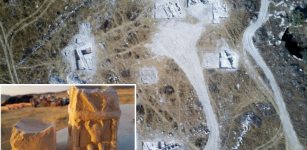 Large Mysterious 2,000-Year-Old Structure Discovered At The Center Of A Military Training Area In Israel
Archaeology | Dec 3, 2017
Large Mysterious 2,000-Year-Old Structure Discovered At The Center Of A Military Training Area In Israel
Archaeology | Dec 3, 2017 -
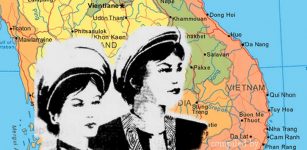 Trung Sisters Of Vietnam: National Heroines That Stood Against Cruel Chinese Occupation Of Their Country
Featured Stories | Apr 29, 2019
Trung Sisters Of Vietnam: National Heroines That Stood Against Cruel Chinese Occupation Of Their Country
Featured Stories | Apr 29, 2019 -
 Long-Lost Artifact Re-Discovered In Michigan Offers Evidence Of Overseas Visitors In Pre-Columbian Times
Legends And Mysteries Of North America | Jul 16, 2024
Long-Lost Artifact Re-Discovered In Michigan Offers Evidence Of Overseas Visitors In Pre-Columbian Times
Legends And Mysteries Of North America | Jul 16, 2024 -
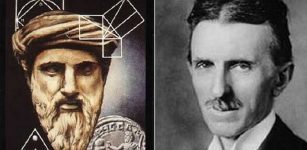 When Science, Spirituality and Magic Meet – Re-Discovering Old Ancient Knowledge
Featured Stories | Feb 18, 2020
When Science, Spirituality and Magic Meet – Re-Discovering Old Ancient Knowledge
Featured Stories | Feb 18, 2020 -
 Was Aztec And Mixtec Turquoise Mined In the American Southwest?
Archaeology | Jun 15, 2018
Was Aztec And Mixtec Turquoise Mined In the American Southwest?
Archaeology | Jun 15, 2018 -
 “Hittite Forest” That Grew 4,500 Years Ago Will Be Created In Alacahöyük, Turkey
Archaeology | Dec 21, 2015
“Hittite Forest” That Grew 4,500 Years Ago Will Be Created In Alacahöyük, Turkey
Archaeology | Dec 21, 2015 -
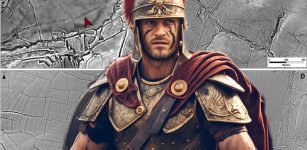 First-Ever Discovery Of Roman Road Network Spanning The South West UK Made By LIDAR
Archaeology | Aug 7, 2023
First-Ever Discovery Of Roman Road Network Spanning The South West UK Made By LIDAR
Archaeology | Aug 7, 2023 -
 Satellite Images Reveal Ancient Mesopotamian City Pre-Dating The Egyptian Pyramids
Archaeology | Mar 10, 2022
Satellite Images Reveal Ancient Mesopotamian City Pre-Dating The Egyptian Pyramids
Archaeology | Mar 10, 2022 -
 Remains Of A 2,300-Year-Old Sunken Ship Discovered At Alamein Shore
Archaeology | Aug 12, 2023
Remains Of A 2,300-Year-Old Sunken Ship Discovered At Alamein Shore
Archaeology | Aug 12, 2023 -
 Rare 2,800-Year-Old Assyrian Scarab Amulet Found In Lower Galilee
Archaeology | Feb 24, 2024
Rare 2,800-Year-Old Assyrian Scarab Amulet Found In Lower Galilee
Archaeology | Feb 24, 2024 -
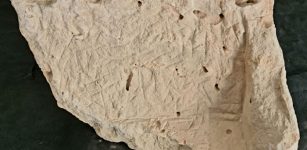 3,500-Year-Old Stone Inscribed With A Curse Against The City’s Governor Discovered In Jerusalem
Archaeology | Jul 13, 2022
3,500-Year-Old Stone Inscribed With A Curse Against The City’s Governor Discovered In Jerusalem
Archaeology | Jul 13, 2022 -
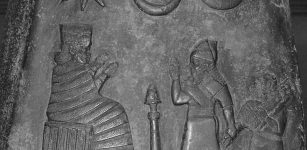 Kudurru Of Melishihu – Stone Records From The Kassite Dynasty In Babylonia
Artifacts | Jan 17, 2016
Kudurru Of Melishihu – Stone Records From The Kassite Dynasty In Babylonia
Artifacts | Jan 17, 2016 -
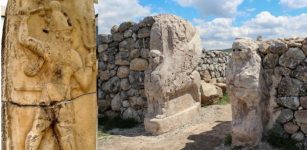 Code Of Nesilim: Ancient Laws Of The Hittites
Ancient History Facts | Jun 14, 2018
Code Of Nesilim: Ancient Laws Of The Hittites
Ancient History Facts | Jun 14, 2018 -
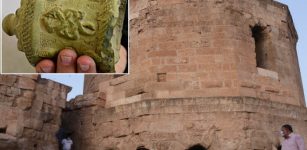 The Main Gate Of Historical 9th-Century Old Harran Palace Unearthed
Archaeology | Oct 25, 2020
The Main Gate Of Historical 9th-Century Old Harran Palace Unearthed
Archaeology | Oct 25, 2020 -
 Remains Of Medieval Port Discovered In Eindhoven
Archaeology | Nov 17, 2020
Remains Of Medieval Port Discovered In Eindhoven
Archaeology | Nov 17, 2020 -
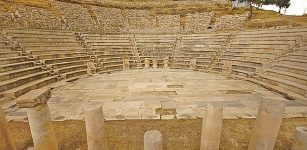 Cult Of Zeus Discovered In The Ancient City Of Metropolis
Archaeology | Dec 21, 2015
Cult Of Zeus Discovered In The Ancient City Of Metropolis
Archaeology | Dec 21, 2015 -
 Earliest Evidence Of Evolutionary Trait That Enabled Dinosaurs To Become Giants – Brazilian Fossil Reveals
Evolution | Jun 21, 2023
Earliest Evidence Of Evolutionary Trait That Enabled Dinosaurs To Become Giants – Brazilian Fossil Reveals
Evolution | Jun 21, 2023 -
 Strzyga (Strix): Slavic Malevolent Winged Female Demon With Two Souls That Usually Haunts Churches, Towers, Barns
Featured Stories | Aug 9, 2019
Strzyga (Strix): Slavic Malevolent Winged Female Demon With Two Souls That Usually Haunts Churches, Towers, Barns
Featured Stories | Aug 9, 2019


